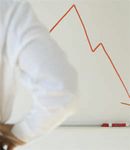Buying capital equipment (Sponsored by Intervet/Schering-Plough Animal Health)
There are lots of reasons for buying equipment. But whenever you contemplate a significant purchase, you should always be thinking about the return on investment (ROI).
When cash flow tightens, many people merely eliminate nonessentials. But pruning discretionary spending alone isn't enough to cure a cash crunch. On the other hand, making a calculated investment to drive revenue growth and control relative costs can help you survive hard times and emerge stronger than ever, if you can see the ripple effect the purchase will cause. Think about these issues to decide whether a purchase will boost revenue—or drain it.

(PHOTO: GETTY IMAGES)
What's the ROI?
There are lots of reasons for buying equipment. You may want to improve quality of medicine, replace older broken items, make life easier, or perform new services. In flush times, you might simply want a neat medical toy. But whenever you contemplate a significant purchase, you should always be thinking about the return on investment (ROI).
If a purchase yields positive net cash flow, it is a good investment in both the short and the long term. If a purchase hurts cash flow, it's nothing more than an additional cost.
To project the ROI of a capital equipment purchase, you should account for all current costs that will be reduced and all new costs that will be incurred if you make the purchase. These costs relate to service contracts, disposable supplies, maintenance costs, staff time, and so on.
Also look at how the revenue picture will change. Gross revenue is controlled by patient count and transaction fees; so calculate any increases in your fees, increases or decreases in the services you provide, and changes in such factors as frequency of patient visits, referrals, and client compliance.
Applying the theory
The differences in quality and features between specific products can change the ROI dramatically. Let's consider a digital radiography example. Many practices have either recently made this investment or soon will. When you look at this
list of factors, think about how many are affected by the specifics of the product:
- Volume of radiographs may increase because better image quality makes the images more useful, so the doctor recommends the service more.
- Easier and faster than film, digital radiography increases doctors' recommendations because they don't have to make clients wait or return for the patient
- The high-end technology enhances client confidence and thus compliance.
- Price of radiographs should increase if medical value increases and client service improves.
- Film and processor maintenance costs drop.
- The new equipment may be less demanding of staff time.
- The practice would take on new lease or loan costs.
- Doctor commission on newly realized revenue will increase if paid on production.
- Maintenance and/or warranty on the new equipment add to costs.
Cheaper is not always better
Now, thinking about the specific product you might buy, you'll only see volume and price increases if the image quality improves significantly and the workflow and speed of the system increases. Lease or loan costs increase with the price of the system, and maintenance and warranty costs vary from system to system. So a less expensive system may be a poor expenditure if that lower price means that you don't see improved image quality, reliability, and speed.
When you're considering an equipment purchase, a weak or negative ROI analysis may mean that it's best to hold off. However, regardless of the cost of a capital equipment purchase, if the features and benefits of that product deliver positive cash flow, it's actually costing you money not to make the purchase.
Greg Stoutenburgh is president and CEO of the Symphony veterinary consulting group in Carlsbad, Calif.